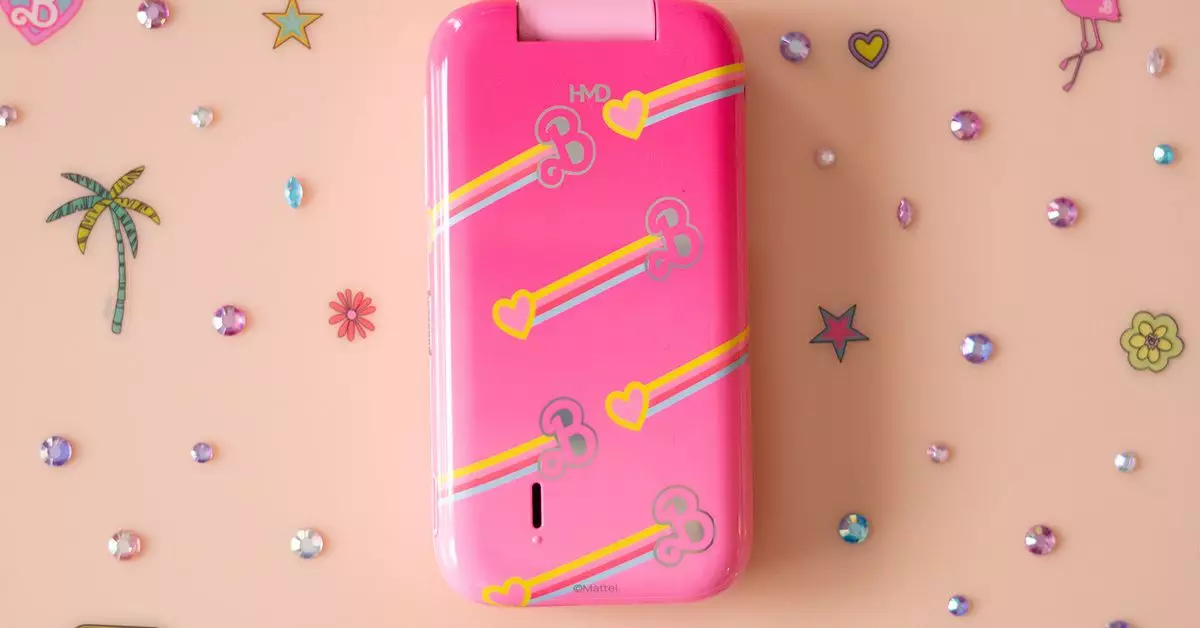The intersection of pop culture and technology often produces fascinating results, with the latest example being the Barbie Phone. This homage to the iconic doll, created by Mattel and facilitated by HMD, draws upon nostalgia and creativity, but how well does it perform as a communication device in today’s hyper-connected landscape? In this examination, we will delve deeper into its aesthetics, functionality, and ultimately question its place in a world dominated by smartphones.
At first glance, the Barbie Phone captivates with its vibrant design. Mirroring the aesthetics of the iconic doll, the phone arrives packaged in an eye-catching box complete with playful accessories like interchangeable back plates, rhinestone stickers, and a Barbie-themed interface. The phone’s initiation greeting, “Hi Barbie!” upon powering up epitomizes its playful and whimsical approach. The blends of pinks may appeal to enthusiasts of the Barbie brand, but this leads us to wonder whether beauty alone can carry the weight of functionality.
The device’s design is certainly alluring, but it also functions as a reminder of Barbie’s historically unrealistic proportions. While seemingly adorable, does this idealized form factor contribute to a usable feature? Or does it merely distract us from the phone’s underlying deficiencies? In a world where devices cater to practicality, the Barbie Phone raises more questions than it answers.
The Barbie Phone operates on KaiOS, a simplified system that limits its functionalities primarily to calling, texting, and basic internet access. This restriction is intended to facilitate real-life interactions, a concept encapsulated in “Barbie Tips” found within the device’s interface. These tips, encouraging users to take breaks from their smartphones and engage more with their peers, come off as ironic when weighed against the actual user experience.
For many, the prospect of swapping out a smartphone for this light-featured alternative seems enticing, yet the reality reveals numerous frustrations. Trying to enter a complex password on an old-school T9 keypad can be an exercise in patience, with predictive text features often compounding inefficiencies further. Essential tasks, such as syncing calendars, managing FM radio, or browsing the internet, often encounter unexpected hiccups. Furthermore, users should not underestimate the time it takes to become acclimated to a simpler interface when trying to navigate real-world demands.
Although the Barbie Phone is marketed as a playful accessory that encourages a break from digital saturation, it ultimately feels more like a novelty item than a practical device for communication. During the initial excitement of unboxing, the phone captures your imagination, but as you delve deeper into daily usage, that allure quickly wanes. The novelty of having a mirror on the front transforms into a distraction, highlighting smudges and fingerprints rather than facilitating an effortless user interaction. Such design elements may appeal on an aesthetic level, but they compromise functionality where it matters most.
People yearning for a true digital detox may find themselves disillusioned when they encounter the device’s limitations. It might serve as a cute addition to a collection but remains impractical for those wholly immersed in modern-day connectivity.
In summation, while the Barbie Phone is undeniably charming in aesthetic appeal and concept, its practical application leaves much to be desired. It serves as a delightful collector’s item, akin to a doll taken out for playtime but ultimately left sidelined once the novelty fades. For those committed to a tech-free lifestyle, it may provide a temporary escape; however, for the majority who rely heavily on smartphones for various facets of life, transitioning to the simplistic nature of the Barbie Phone will likely evoke more frustration than enjoyment.
In the end, the Barbie Phone stands as a reminder of the powerful allure of nostalgia yet highlights how a beautifully designed product can still miss the mark in terms of functionality. As it exists now, it’s a product worth admiring but perhaps not one you’d want to rely on for your communication needs. The dream world that Barbie embodies may not translate seamlessly into the tech-driven reality that many of us navigate daily.

